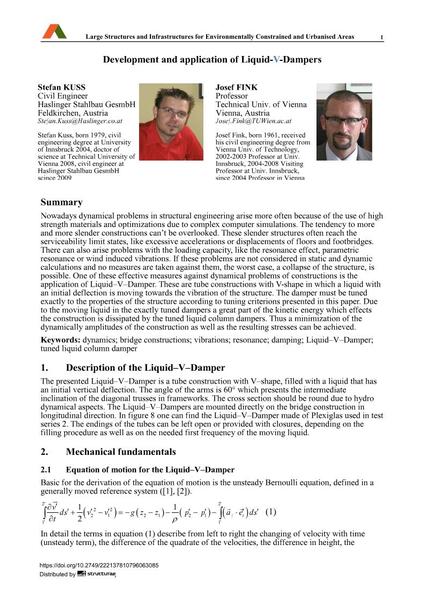Development and application of Liquid-V-Dampers

|
|
|||||||||||
Détails bibliographiques
| Auteur(s): |
Stefan Kuss
Josef Fink |
||||
|---|---|---|---|---|---|
| Médium: | papier de conférence | ||||
| Langue(s): | anglais | ||||
| Conférence: | IABSE Symposium: Large Structures and Infrastructures for Environmentally Constrained and Urbanised Areas, Venice, Italy, 22-24 September 2010 | ||||
| Publié dans: | IABSE Symposium Venice 2010 | ||||
|
|||||
| Page(s): | 638-639 | ||||
| Nombre total de pages (du PDF): | 8 | ||||
| Année: | 2010 | ||||
| DOI: | 10.2749/222137810796063085 | ||||
| Abstrait: |
Nowadays dynamical problems in structural engineering arise more often because of the use of high strength materials and optimizations due to complex computer simulations. The tendency to more and more slender constructions can’t be overlooked. These slender structures often reach the serviceability limit states, like excessive accelerations or displacements of floors and footbridges. There can also arise problems with the loading capacity, like the resonance effect, parametric resonance or wind induced vibrations. If these problems are not considered in static and dynamic calculations and no measures are taken against them, the worst case, a collapse of the structure, is possible. One of these effective measures against dynamical problems of constructions is the application of Liquid–V–Damper. These are tube constructions with V-shape in which a liquid with an initial deflection is moving towards the vibration of the structure. The damper must be tuned exactly to the properties of the structure according to tuning criterions presented in this paper. Due to the moving liquid in the exactly tuned dampers a great part of the kinetic energy which effects the construction is dissipated by the tuned liquid column dampers. Thus a minimization of the dynamically amplitudes of the construction as well as the resulting stresses can be achieved. |
||||
